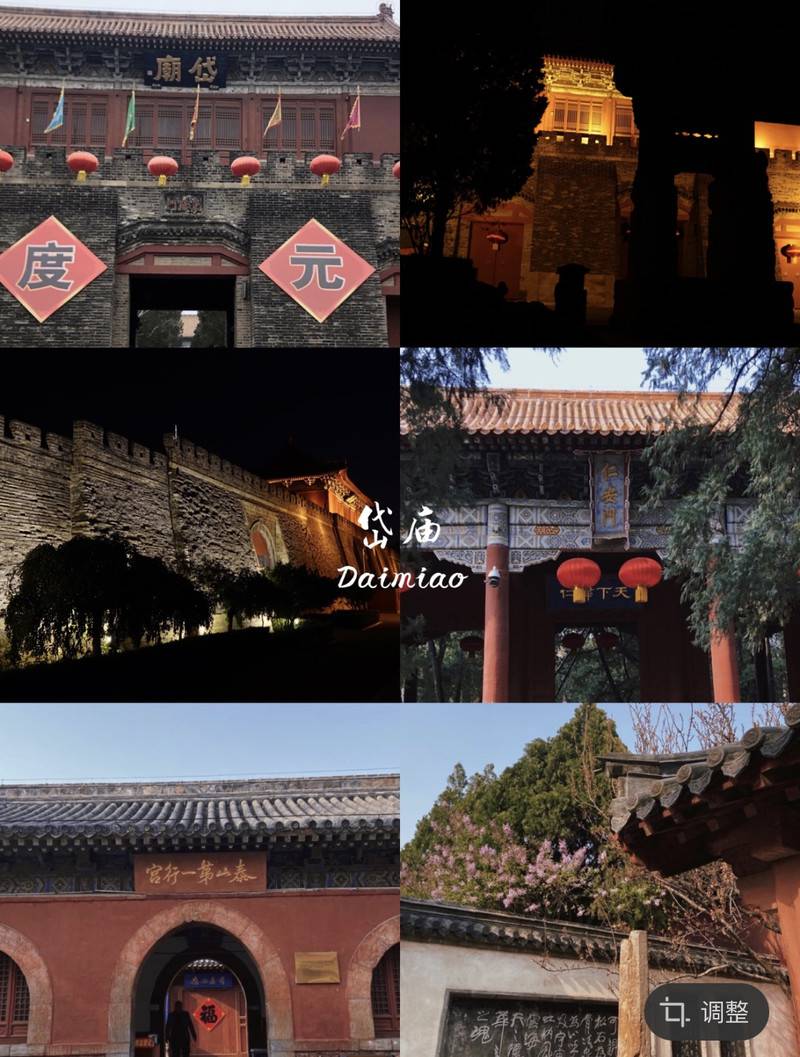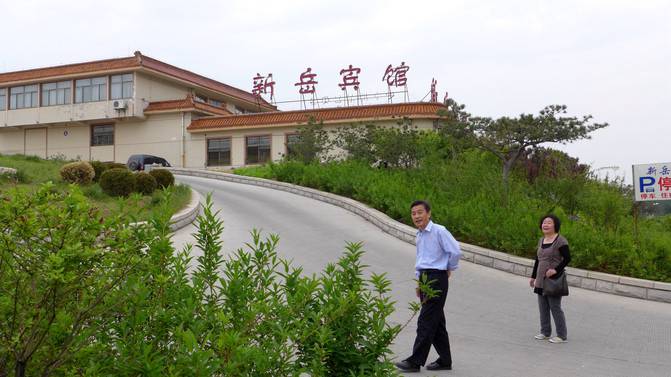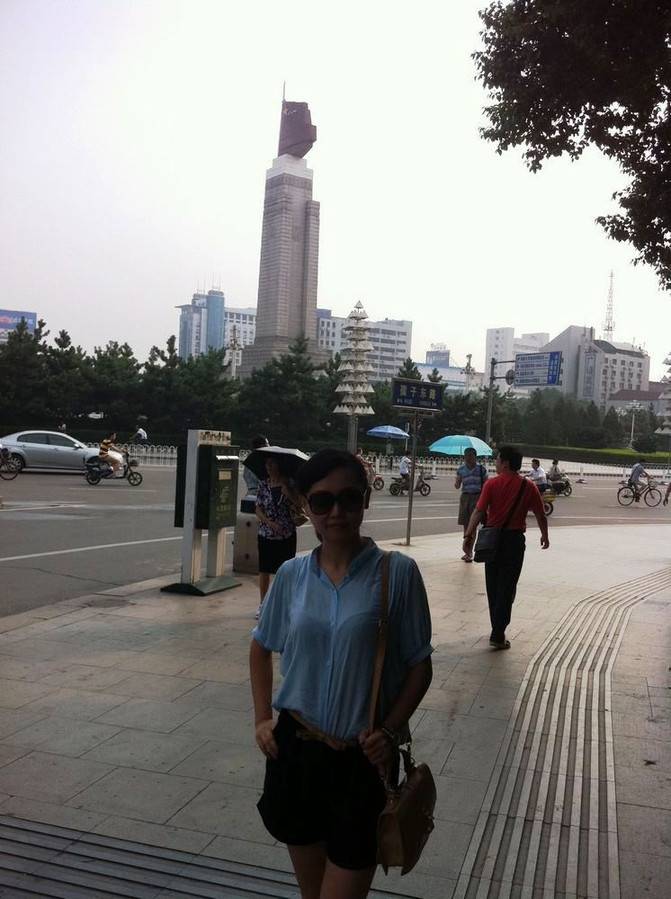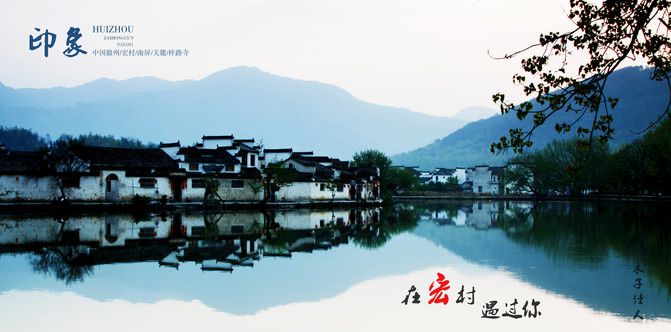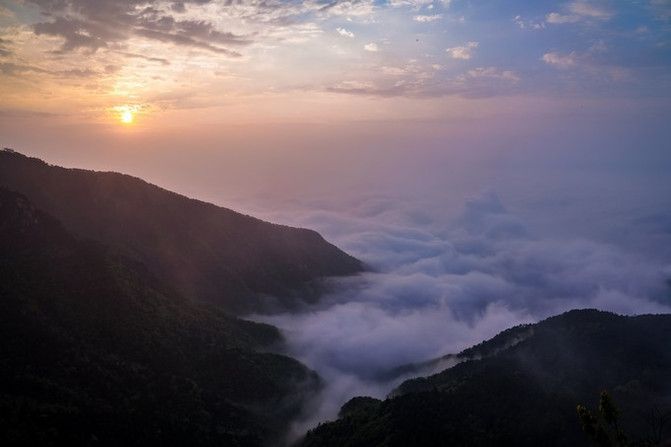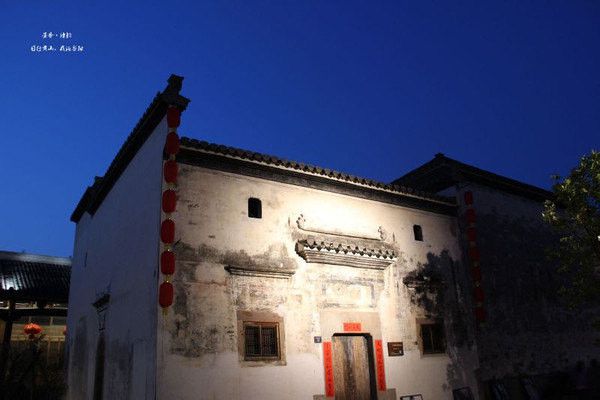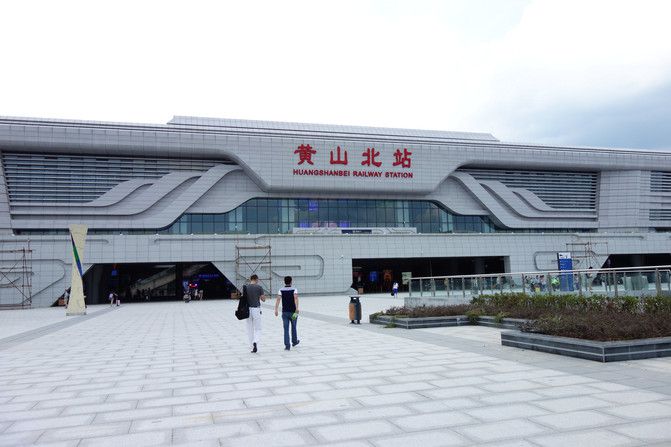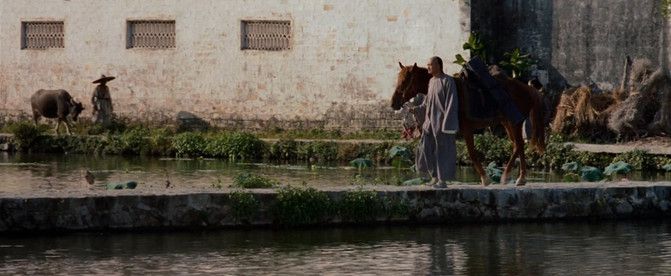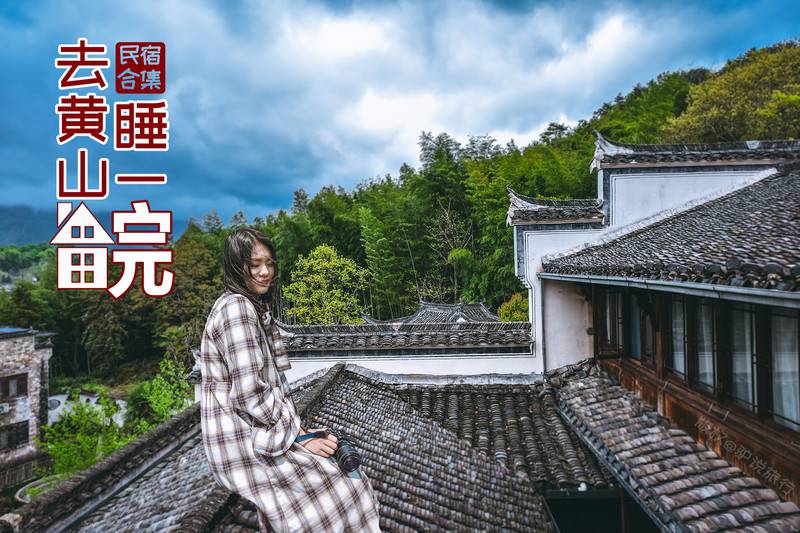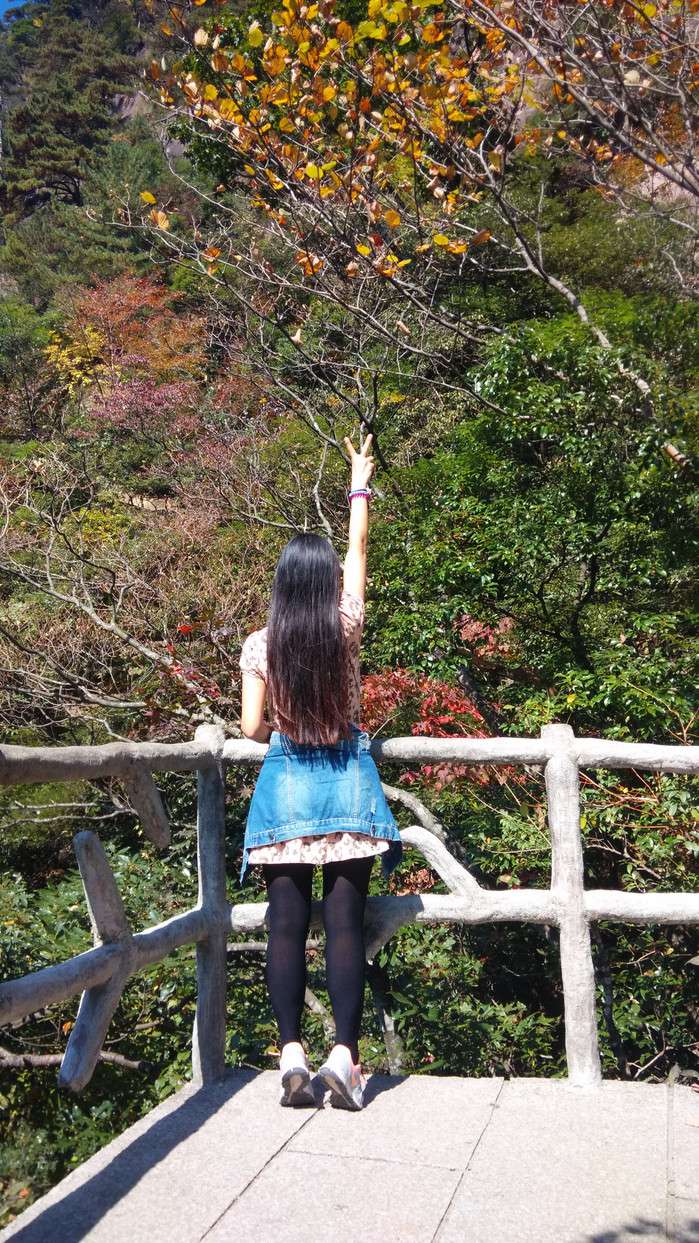June 10,2022 Post by :Ruoshui Chen
A four-day self-help tour of Jinan and Tai'anShandong, also known as Qilu
There is also a pair of seals in one part of the waterway
I think it's one of the most beautiful lakes in the center of a big city
The third day's task is the most important
Show all 4 days away
Shandong, also known as Qilu, is an important region with a long history of Chinese civilization To travel in Shandong, Xiaosheng thinks that there are two main routes: one is to go to Qingdao, Yantai and other beautiful coastal cities; Second, wandering around Jinan, including Tai'an, Qufu, including the hinterland of Qilu. The former is to feel the modernity and passion of Shandong, while the latter is to taste the history and charm of Shandong. This summer, taking advantage of some opportunities, I visited the latter in search of the charm of history, which can be summed up in poetry as follows: springs, clear lakes, reflecting Foshan, and the five mountains, respecting Dai Ding.
Jinan, a spring city, is one of the most representative provincial capitals in China, with its lake scenery, mountain scenery, authentic Shandong cuisine and long Qilu culture.
The first sentence summarizes the spring scenery, lake light and mountain scenery of Jinan. The ancient poem describes the old city of Jinan as "surrounded by lotus flowers and willows on three sides, one city with mountains and half city lake". The most famous spring is Baotu Spring, but the local friends praise Baimai spring; This lake refers to the Daming Lake in the center of Jinan; This mountain refers to Qianfo Mountain in the south of the city Baotu Spring, Daming Lake and Qianfo Mountain are all in the urban area of Jinan, even in the downtown area. Tourists can easily get there by taxi or bus. Baimaiquan is located in Zhangqiu City to the east of Jinan City. Tourists can take a taxi or a bus to dianliuzhuang long distance bus station on the Second Ring Road East of Jinan City, and take a bus to Zhangqiu. From 6:30 in the morning, it will be sent every 10 to 15 minutes. When they come back, they can directly block the bus on the main road, as long as they go back to Jinan.
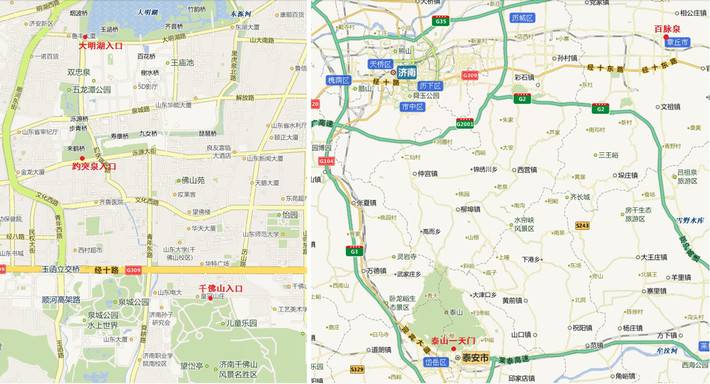
The geographical location of the main scenic spots in this trip.
Jinan
Jinan is famous for its spring city. Let's start with spring.
If only the spring water could return to its former surge.
Baotu Spring is the most famous spring in Jinan. I heard that in recent years, the water situation has become weaker and weaker, and the spring is far less than the grand occasion of that year. As it happens, it's raining heavily in Jinan these days. I guess the spring should be supplemented. In addition, it's hard to be famous. In the morning, I stayed in the hotel near Quancheng road in the center of the city, put down my luggage, took a taxi, and the first stop was Baotu Spring Park Baotu Spring Park is located in the center of Jinan, close to the spring city square. The front of the south gate is inscribed with "Baotu Spring", and the back is inscribed with "jituan". The park is built on the spring and lives on it. I don't know if the water vein has been broken, and several successive springs are still in the water. I can't help feeling cool in my heart.
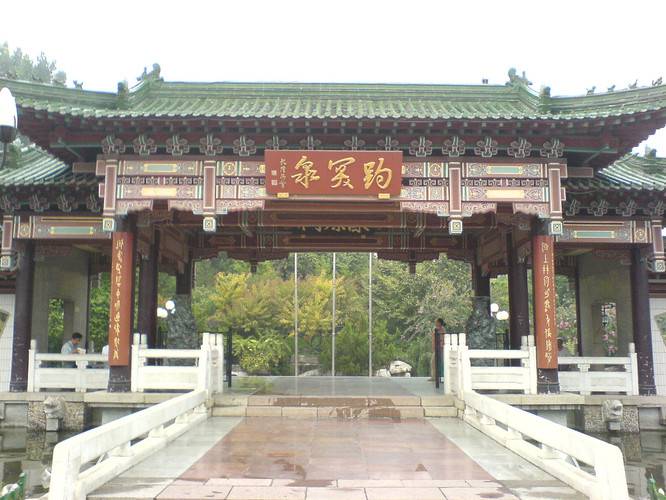
The main entrance of Baotu Spring Park.
Baotu Spring Scenic Spot
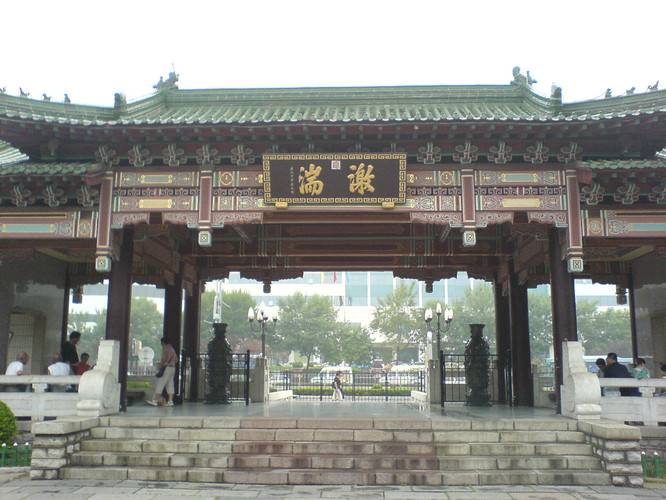
The back of the front door.
Baotu Spring Scenic Spot
In the eye of Baotu Spring, fortunately, the uproar of voices told me that I was not all disappointed. I saw a pool of indigo water at the bottom of the Qingming Festival, and three white flowers rose in the pool. Although the sound did not reach the name of "putu putu", it was the first spring I saw in the spring city, and I still praised one.
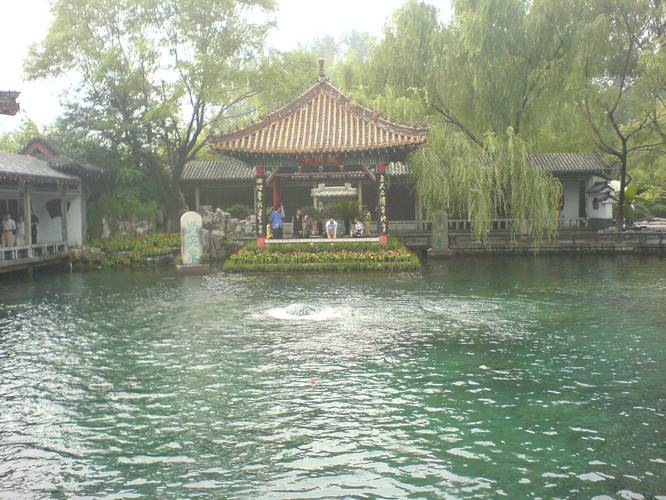
Baotu Spring front.
Baotu Spring Scenic Spot
Looking through the historical books, Baotu Spring was first known as "Qi duo Gan Quan, Jia Yu Tian Xia"; According to the spring and Autumn Annals, in the 18th year of Duke Huan of Lu (694 BC), "the Duke met the Marquis of Qi in Luo.". In the Northern Wei Dynasty, because there was an e-ying Temple beside the spring, it was called "e-jiang water" or "e-ying water", also known as "Chuanquan". Baotu Spring was also called "waterfall spring" and "explosion spring" in Jin Dynasty“ The name of "Baotu" first appeared in the Song Dynasty famous writer Zeng Gong's Qizhou Ertang Ji.
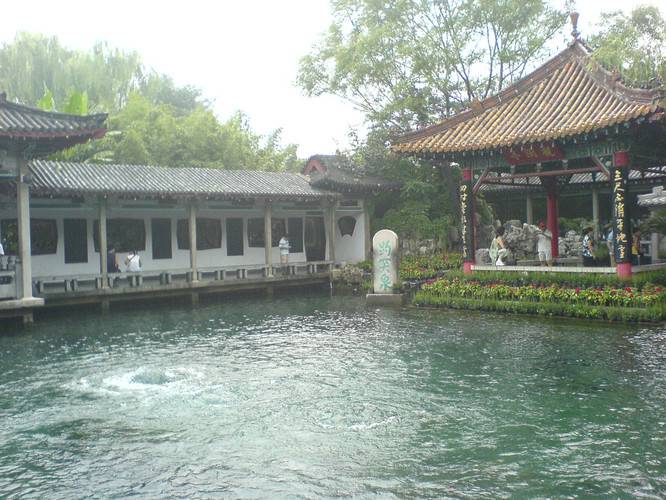
On the side of Baotu Spring, three springs can be clearly observed.
Baotu Spring Scenic Spot
The crowd at Guanquan.
Baotu Spring Scenic Spot
Baotu Spring and the same considerable, I think it is next to the Tianchi Pavilion. The purpose of this pavilion is to explain the origin of Jinan spring. There are dragon plates carved around the pool, and a water column will be ejected from the dragon's mouth.
Tianchi Pavilion, you can popularize science.
Baotu Spring Scenic Spot
In addition to the spring, the garden also has the traditional garden characteristics of the ten thousand bamboo garden, the white snow building, Memorial Hall of Li Qingzhao and other small layout.
Wanzhuyuan.
Baotu Spring Scenic Spot
A glimpse of the park.
Baotu Spring Scenic Spot
A glimpse of the park.
Baotu Spring Scenic Spot
Snow white building.
Baotu Spring Scenic Spot
Worry free spring.
Baotu Spring Scenic Spot
"Ji Tuan" stone tablet.
Baotu Spring Scenic Spot
Li Qingzhao Memorial Hall.
Baotu Spring Scenic Spot
Shuyu hall.
Baotu Spring Scenic Spot
Shuyuquan.
Baotu Spring Scenic Spot
There is also a pair of seals in one part of the waterway, maybe for performance.
I don't know why Baotu Spring Park should raise seals.
Baotu Spring Scenic Spot
The whole Baotu Spring Park, I think, is more about its fame. If we really want to talk about the view of scenery and the taste of rhyme, we really need to strengthen it. At present, Baotu Spring tickets are 40 yuan, 20 yuan after 7 pm.
There are more springs than Baotu Spring. It's worth coming, but it's a little far away. It's in Zhangqiu, a county-level city under the jurisdiction of Jinan.
Although Baotu Spring Park has some small regrets, Zhangqiu Baimaiquan Park, not far from Jinan, is quite impressive. Different from Baotu Spring Park, the springs here are almost all gushing. A ticket of 50 yuan allows you to enjoy the dragon spring of Qianlong qiaoke, the Mo spring which is as sweet and delicious as mushrooms, the Baimai spring which is full of falling pearls, and the plum spring which is full of surging atmosphere It's convenient. I took a taxi directly from the gate of Baotu Spring Park You can read before you leave: Baimaiquan park is divided into three parts: natural scenery area, Longquan Temple and Qingzhao garden along the flow direction of water due to its geographical situation. As soon as you enter the garden, you can enjoy the scenery. Famous spring water scenic spot is the key element of the whole garden, which takes Mingshui Lake as the center to express poetic and picturesque feelings. On the precipitous stone, there is a pavilion named Huiquan Pavilion, which overlooks the whole garden; The modern charm of Mingshui city can be seen from afar. You lake, built "Zhuoying" and "Yiyi" two pavilions, can rest under the pavilion, enjoy the spring waterfront. Two marble arch bridges on the water divide the lake into three sides. The South Lake is small and empty; The North Lake has flat waves and thin waves; The West Lake is deep and swift. Boating in the center of the lake, the water color and sky light are reflected in each other, which makes people relaxed and happy. In Mingshui lake, all springs are connected. There is a "spring" at the gate of the garden. The spring water is flowing upward; Huiquan Pavilion behind the "Longwan spring", spring surging, sparkling; There is "golden mirror spring" in the west of Longquan Temple. The spring is like a mirror, shining and crystal clear. The well-known "Baimaiquan" under the palace of the Vatican king is composed of two groups of springs from the north and the south. The middle arch bridge connects with each other, and the beads are flowing in the pool. It is a marvelous sight in the world.
A glimpse of Baimaiquan park.
Baimaiquan Park
Longquan stone tablet.
Baimaiquan Park
There are two places in the garden: one is the ancient temple Longquan, which was built in 1450. I found that the plaque on the gate of the temple says "Longquan ancient temple", while the gable says "Longquan Temple". It is said that the two words "long / long" have their own meanings. "Long" is the name of the temple, while "long" is the luck of the temple, which shows the potential of the spring, because in front of Longquan Temple is "Moquan", one of the ten famous springs in Jinan. Overlooking the spring pool, the surging spring looks like a black mushroom. However, if you use a container to hold the spring water, it is clear and bright, and a taste of it is extremely sweet. You don't need to bring any mineral water here. An empty bottle is the most useful thing. When you enter the ancient temple, another spring group is in front of you. This spring, like countless jade beads scattered, numerous and enchanting, is called "hundred veins". There is also an ancient monument notice in the temple, which tells the local residents to warn everyone to protect the spring vein. It can be seen that the ancient people have a strong sense of environmental protection.
Moquan.
Baimaiquan Park
Longquan Temple.
Baimaiquan Park
Baimai spring.
Baimaiquan Park
The main gate of Longquan Temple.
Baimaiquan Park
A hundred veins flow together.
Baimaiquan Park
Another place is Qingzhao garden, with the title of "Longquan Shuyu", just like the memorial hall in Baotu Spring Park, it is also in memory of the famous poetess Li Qingzhao. As soon as you enter the gate, you will see a standing statue of a CI girl, elegant and beautiful. It seems to be happy on the left and sad on the right, as if reflecting the poet's mood. From the corridor through, five eyes gushing clear spring undoubtedly took away everyone's eyes, this is the plum blossom spring. The pool water is as high as the stone bridge, and the spring is surging, pushing the pool water wave by wave across the stone bridge. People walk on the bridge deck, especially if the water is going up. This design is really wonderful. There is also a Koizumi beside the plum blossom spring, named "Shuyu", which is said to be the place where Li Qingzhao combed and moistened his face in those days.
Shuyuquan.
Baimaiquan Park
Longquan Shuyu.
Baimaiquan Park
Longwan spring.
Baimaiquan Park
Looking at the spring city, it seems that a hundred veins should be the first.
Jinan's city center square is very big and hot. There is a shopping center nearby. It's a good place to go for a walk and buy some local products in the evening,
When I got back to the hotel, it was getting late. I went out for a walk to have a meal. Unconsciously, I went to Quancheng Square, where many Jinan citizens took a cool It is said in the introduction: Quancheng Square is located in the center of the city, the central square of Jinan, and also a large modern square integrating culture and entertainment, greening and leisure, and commercial shopping. The square is adjacent to Baotu Spring in the west, Qianfo Mountain in the South and moat in the north. It shows the outline of the city to the tourists, and brings several major scenic spots that can best reflect the characteristics of spring city into the vision of the square. The square is rectangular, 780 meters long from east to west and 230 meters wide from north to south, covering an area of 16.7 hectares. From west to East, it is mainly composed of Baotu Spring Square, Jinan mingshilin, quanbiao square, sunken square, Yitian garden and children's paradise, Riverside square, four seasons garden, lotus music fountain, cultural corridor, science and education cultural center, Ginza shopping plaza, etc. Quancheng Square embodies the characteristics of "mountain, spring, lake, city and river". The square design also emphasizes the "spring culture". There is a lotus music fountain in the East, which can transform several shapes; There are four groups of fountains under the Western spring label, which means "four famous fountains" of Jinan, 72 small fountains, which means "72 famous fountains", and is nailed with the famous brand of "72 famous fountains" of Jinan. Visitors can learn about the "spring culture" of the spring city here.
Sculpture of Quancheng Square.
Quancheng Square
Ginza shopping plaza.
Quancheng Square
Big fountain.
Quancheng Square
Besides springs, lakes and mountains are also indispensable parts of the beautiful scenery of spring city. Jinan has three sceneries: Baotu Spring, Daming Lake and Qianfo Mountain. Today's trip is mountains and lakes.
The air is good. It's very comfortable to climb in the morning. The Wanfo cave is worth visiting.
In the morning, while the weather was still cool, I chose to climb the mountain The mountain is called "Thousand Buddhas". As the name suggests, it is a place for worshiping Buddhas. Qianfo Mountain was called Lishan in ancient times, also named Shungeng mountain. According to legend, when Emperor Yushun was the people in ancient times, he worked under Lishan Mountain, which was called Shungengshan. According to historical records: during the Sui Dynasty, Buddhism prevailed in Shandong Province. Devout believers carved a large number of stone Buddhas along the wall of the mountain, and built a thousand Buddha Temple to get the name of thousand Buddha mountain. . From the downtown to the south, the taxi only needs the starting price to reach the gate archway of Qianfo Mountain. The admission fee is 30 yuan. In addition, there are 5 yuan for Xingguo temple, 5 yuan for Guanyin garden and 15 yuan for Wanfo cave. Cableway one-way 15 yuan, round-trip 25 yuan, but the mountain is not high, climbing exercise is better. It's said that people who come for morning exercise at six o'clock in the morning can enter the park for free, but obviously I don't have the courage to leave the bed too early.
Qianfo Mountain Gate.
Thousand Buddhas Mountain
Qianfo Mountain is not high. It is only 285 meters above sea level. It goes up the stone steps. There are many scenic spots scattered on both sides, such as the eighteen Arhats, Lingguan hall, Sleeping Buddha, Guanyin garden, immortal cave, etc. After the pagoda Pavilion of the Tang Dynasty, the backstage steps become steeper, passing through the "qiyanjiudian" memorial archway, climbing a hundred steps, and after the "yunjingchankai" archway, you come to Xingguo temple, also known as the "Thousand Buddha Temple".
Lingguan hall.
Thousand Buddhas Mountain
Sleeping Buddha.
Thousand Buddhas Mountain
Guanyin garden.
Thousand Buddhas Mountain
Fairy Cave.
Thousand Buddhas Mountain
Tang huaiting.
Thousand Buddhas Mountain
"Qiyanjiudian" memorial archway.
Thousand Buddhas Mountain
"Cloud path" memorial archway.
Thousand Buddhas Mountain
Xingguo temple is located on the mountainside of Qianfo Mountain, with the main hall, Guanyin hall, Maitreya hall and Duihua Pavilion. On the south side of Qianfo cliff, there are more than 130 Buddha statues from kaihuang period of Sui Dynasty. From west to East, there are Longquan cave, blissful cave, qianlou cave and luzu cave. Passing through the temple to the East, the Lishan temple is next. There are Shun temple, Shengyi temple, Sansheng hall, and a pavilion in the courtyard, which is a popular spot of Shun culture.
The stone tablet of the temple.
Thousand Buddhas Mountain
Tallinn.
Thousand Buddhas Mountain
Lishan courtyard.
Thousand Buddhas Mountain
Shun temple.
Thousand Buddhas Mountain
Standing on Qianfo Mountain overlooking Jinan City.
Thousand Buddhas Mountain
Further eastward, along the driveway, you can see the huge Maitreya Buddha from a distance. Down to the north foot of the mountain, there is a ten thousand Buddha cave, which can be regarded as the most attractive scenic spot in Qianfo Mountain. There are more than ten thousand statues carved in the cave from the Northern Wei Dynasty, Sui Dynasty, Tang Dynasty to the Song Dynasty. The depth of the cave is about 500 meters. It is cold and humid. Even in midsummer, the workers in the cave need cotton padded coats.
Maitreya Buddha.
Thousand Buddhas Mountain
It feels a bit like the Great Wall.
Thousand Buddhas Mountain
Ten thousand Buddha cave.
Sculpture in the cave.
Thousand Buddhas Mountain
There are Buddhas everywhere.
Thousand Buddhas Mountain
The walls on both sides are full of Buddhas.
Thousand Buddhas Mountain
Buddha's head on the ground.
Thousand Buddhas Mountain
Finally, I see the color.
Thousand Buddhas Mountain
Dense Buddha statues.
Thousand Buddhas Mountain
A scene after going down the mountain.
Thousand Buddhas Mountain
I think it's one of the most beautiful lakes in the center of a big city.
After climbing the mountain, walking on the Bank of Minghu lake is also a beautiful thing. Take a taxi directly to Daming Lake As early as the Northern Wei Dynasty, Li Daoyuan's shuijingzhu recorded: "Luoshui flows northward to Daming Lake, Daming Temple in the west, and lake in the East and North." In the Six Dynasties, the lake was once known as "Lianzi Lake" because it was full of lotus. In 1072 A.D., when Zeng Gong was the magistrate of Qizhou (now Jinan), he built the beishuimen to prevent floods. He led the lake into Xiaoqing River and built pavilions, platforms, dikes and bridges along the lake to make it a tourist landscape. In Jin Dynasty, Yuan Haowen, a poet, was named Daming Lake in Ji'nan Xingji. The Ming Dynasty rebuilt the city wall, and the Daming Lake became what it looks like today.
The southwest gate of Daming Lake Park.
Daming Lake Scenic Area
Inscription at the door.
Daming Lake Scenic Area
When you enter the garden from the southwest gate, you can see the ethereal light of Daming Lake on your right. In front of a pool called "Longquan", is an artificial spring, water from the five Longtan. Walk along the lakeside and arrive at Yuanyang pavilion a moment later. There are many boats, but few people get on the boat. It's more suitable for you to enjoy the scenery on the lakeside. Further on, after passing an out of place, noisy playground, a fragrant garden in the garden, Tiegong temple, appears in front of us. In the Qing Dynasty, there was a couplet saying: "lotus on all sides, willows on three sides, mountains in one city and half lakes in the city.". The ancestral hall is surrounded by a curved corridor, with lakeshore, courtyard pond, lotus root and green willow in the south.
A glimpse of Daming Lake.
Daming Lake Scenic Area
Overlooking the lake.
Daming Lake Scenic Area
Longquan pool.
Daming Lake Scenic Area
Liantian lotus leaf.
Daming Lake Scenic Area
To the east of the cast iron temple, there is a lake tower. You can see the panoramic view of the Ming Lake, and then to the East, you can go through the stone museum to the moon Pavilion. It is said that without the moon, the white stone base and guardrail will show a piece of yingbai, reflecting in the water together with the moon Pavilion, just like a real object.
The river is deep.
Daming Lake Scenic Area
White fence on the lake.
Daming Lake Scenic Area
Further to the East, there is a building on a 7-meter platform, which is the largest existing Taoist temple in Jinan, the Arctic temple. The North Pole temple, formerly known as the North Pole Pavilion and the north pole platform, is also called the Zhenwu temple, also known as the North Temple. It worships the Taoist God Zhenwu the great. Built in the early Yuan Dynasty, it was rebuilt twice in Yongle of Ming Dynasty and Chenghua of Qing Dynasty. It has experienced more than 700 years of ups and downs. Li zuiqin of Ming Dynasty is the most famous Taoist in the past. He was a master of playing the piano and a brilliant poet. He often played the piano and recited poems on the lake with famous scholars at that time. After Li zuiqin died, fan Dong, a famous poet, printed and published his poems. This is: "the spring city has been a poetry city since ancient times, and there is a calendar Pavilion on the right side of the sea since ancient times. If you ask how many poems there are on the lake, the Taoist in the North Temple has a poem name."
Landscape.
Daming Lake Scenic Area
Lotus pond in summer.
Daming Lake Scenic Area
Lotus pond and weeping willow.
Daming Lake Scenic Area
There is a water gate in the east of the Arctic temple, named Huibo tower. The wonderful place of Huibo building is to go up to the building for sightseeing. Looking from the fence, you can see the mountains in the south, the Huashan Mountain in the north, and the Minghu Lake in the downstairs. Further to the East is the east gate. Turning back to the south, there are two scenic spots, Yuhe hall and Nanfeng temple Here, I found a disgusting place in Daming Lake, that is, the main entrance scenic spot is separated from other scenic spots, and there is no land connection. If you want to go to the main entrance scenic spot, first, spend money to cross Daming Lake by boat; Second, go out and go through the main entrance again. I chose the latter. Unexpectedly, I was told to buy the ticket again at the main entrance. I was so angry that I had a big fight with the doorman (of course, he argued with me politely) and the doorman finally let me in There are not many scenic spots in the main entrance scenic area. Apart from the main entrance archway, there is a Jiaxuan temple with no entrance, and a Jiuqu Pavilion deep in lotus root. As for cuiliuping and Haoran Pavilion, you can have a distant view.
Actually, this is the main entrance.
Daming Lake Scenic Area
It's also a lot of lotus ponds.
Daming Lake Scenic Area
Lotus pond and arch bridge.
Daming Lake Scenic Area
Daming Lake.
Daming Lake Scenic Area
It's a nice alley to walk along.
After coming out from the main gate of Daming Lake and crossing the main road, there is a deep winding lane called "qushuiting Street", which has the flavor of spring city well. Water passes in front of the gate and children play. It's worth a visit.
Rivers and tunnels.
Qushuiting Street
Rest people.
Qushuiting Street
Authentic Shandong cuisine, good environment, low price.
It's a private room with ancient charm.
Braised Intestines in Brown Sauce.
Stewed Pork Ball in Brown Sauce.
Glutinous rice balls.
What kind of cake? I forgot, but it's delicious
The third day's task is the most important. We are going to climb Daishan, and we are going back on the same day Daishan is now Mount Tai, also known as Daizong, because it is located in the eastern part of the Central Plains of Qilu, also known as Dongyue. Mount Tai covers a total area of 426 square kilometers. The main peak, Yuhuangding, is 1532.8 meters above sea level. The mountain is magnificent, magnificent, and has many places of interest. It is known as "the only one of the five mountains". Confucius has the saying of "climbing Mount Tai and being small in the world"; Du Fu, a great poet of the Tang Dynasty, also has a good saying that "when you reach the top of the mountain, you can see the small mountains at a glance".
From Jinan to Taishan, even people who don't go out often don't need the help of travel agencies. Jinan long distance passenger terminal starts from more than 6:00 in the morning, every half an hour there will be a express to Tai'an. It takes only one and a half hours for the bus to take the Beijing Shanghai Expressway to arrive at Tai'an coach station. There are many trains from Jinan to Taishan. It's worth noting here. If you take the high-speed railway, you can get there in more than ten minutes, but Jinan usually gets on at Jinan west station, and Tai'an is in the new Tai'an station, which is far away from the city. Therefore, it's not cost-effective to take an ordinary bus. Generally, you can get to the old Taishan station in more than forty minutes, and the ticket price is still cheap There are three routes to Mount Tai. Both the East and West routes take the bus to Zhongtianmen. Only the middle route, the ancient road of Mount Tai, is on foot. I chose the middle line, because only in this way can I appreciate the ambition of conquering Mount Tai thoroughly From the center of Tai'an, you can take bus No.3 for only two yuan to get to the Tianmen gate of Mount Tai, which is also called "panlu Qigong office". There are many literati here who feel like they are climbing. Among them, the arch of "Confucius boarding place" is the most famous. After passing through the "Tianjie" square, you can be regarded as the official territory of Mount Tai. There are stone tablets all over the roadside, which shows that Mount Tai has been famous since ancient times. Now the ticket office of the scenic spot has been moved to wanxianlou, and the ticket price is 125 yuan.
The starting point of Mount Tai is Tianmen.
Mount Tai
The place where Confucius ascended.
Mount Tai
"The first mountain" stone tablet.
Mount Tai
If you enter the Red Gate, you will really enter Mount Tai.
Mount Tai
There are so many stone tablets along the way.
Mount Tai
Wanxianlou, it's time to check the ticket.
Mount Tai
After the Wanxian tower, the scenery around is as good as the inscription on the huge stone. On the first step, I found a line of small words "altitude: 300.0 meters". In my mind, it should be a starting horizontal line. Not far ahead, I found a very interesting stone carving "insect 2". I remember that I also read the name of "insect 2 floor" in my book. In fact, this is a post for the literati to use in order to be clever and elegant: "insect 2" is the word "wind and moon" removed from the border, so it means "boundless wind and moon".
Is it getting better?
Mount Tai
The altitude is 300 meters.
Mount Tai
The famous "boundless wind and moon" stone carving.
Mount Tai
Front to the first important scenic spot into the mountain - Doumu palace. The ancient name of Doumu palace is "Longquan Temple". There is no research on its founding time. It is now rebuilt in Jiajing period of Ming Dynasty. The Doumu palace was originally a Taoist temple, but it was changed into a nun Abbot in the early years of Kangxi in the Qing Dynasty. The palace is divided into three courtyards, with dozens of pavilions, pavilions and corridors. The layout is dense, elegant and solemn. The famous sceneries include "listen to the spring mountain house" and "three pools and cascades".
Doumu palace.
Mount Tai
Natural pool.
Mount Tai
Going on, there are many tea stands beside the Sangong temple. People who come to Mount Tai know that there are three treasures in Mount Tai: tofu, cabbage and water. Tea stalls sell a complex of Taishan water and tea. It's conceivable to charge some money. After all, people boil water, make tea and introduce them. They have no credit but also have hard work. Unlike those stalls that went up the mountain later, they would charge for a few drops of water from a plastic pipe. In this section of the road, I accidentally found a hundred feet. I don't know if it has collected the aura of Mount Tai. It's really big enough. Maybe it will turn into human form in another hundred and eighty years!
Sangong temple.
Mount Tai
What a big bug.
Mount Tai
The distance from here to hutiange is more than two kilometers. There is almost no obvious scenic spot except a Shuizui cave. Hutiange is a cross road loft style building. It was built in the Ming Dynasty. It was originally named Shengxian Pavilion. After it was built in 1747, it was named hutiange because Taoism called fairyland "hutiange". During the Jiaqing period of the Qing Dynasty, Ting Lu, the magistrate of Tai'an, wrote a couplet on the pavilion: "climbing this mountain is half of the pot heaven, and there are still many good places to build the top of the mountain." The most iconic scene here is a pair of double cypresses on the door opening, which are twined up and quite magnificent.
Water cave.
Mount Tai
Hutiange.
Mount Tai
The next important scenic spot behind hutiange is Zhongtianmen. This is the intersection of several mountaineering routes and the most important tourist transportation center of Mount Tai. Zhongtianmen is located on the ridge of huangxianling, 847 meters above sea level. Qingjian stone square with two columns and one door stands across the road, with the title of "Zhongtian gate". Zhongtianmen mountains and precipitous valleys are magnificent. When visitors come here, they either take a bus to see the strange colors for the first time, or walk up the stairs and finally reach the middle of the mountain. All of them feel relaxed and happy.
Zhongtianmen, it's halfway there.
Mount Tai
The transportation hub of Zhongtianmen.
Mount Tai
Starting from Zhongtian gate, it has entered the elite scenic spot of Taishan. To the north of Zhanyun sword, there is a single arch stone bridge across Zhongxi. The bridge is often filled with clouds, pedestrian bridge, Wan in the sky, so it is called "yunbu bridge". In the north of the bridge, there are large steep cliffs with inscriptions all over the place. The waterfall falls straight down and the scenery is excellent. It is a natural place for tourists to stop and have a rest. In the East, there is a "drinking spring Pavilion" built in the Qing Dynasty. The pavilion is made of stone with couplets and poems inside and outside. Visitors can appreciate the great Chinese spirit and sublimate the spiritual world from these stone carvings. Here I also found an advertisement engraved on the stone wall: "China Travel Agency, tour guide is famous". At first glance, I was surprised that there was a travel agency that could advertise on the stone wall of Mount Tai. A closer look shows that this "China Travel Agency" is a relic of the Republic of China.
There are more and more moments behind Zhongtianmen.
Mount Tai
All the writers and men of letters have come here to leave their mark.
Mount Tai
Yunbu bridge.
Mount Tai
Mount Tai
Not far from yunbu bridge, there is a stone square standing on the side of the road, with the title of "five FU pines". There are ancient pines in the west of the square, also known as "qinsong", which is said to be one of the eight scenic spots in Tai'an. According to the records of the historian, Qin Shihuang ascended Mount Tai in the middle of the way to avoid the rain under a big tree. Because of the tree's meritorious service, he granted the tree the title of "five doctors".
Mount Tai
Mount Tai
With the rise of the mountains and the increase of tourists, the prices of commodities are much more expensive than before, so if you want to buy things in the mountains, you'd better buy enough in front of Zhongtian gate, especially the food and drink, such as drinks, millet pancakes, cucumbers, tomatoes, etc.
Shandong local pancake fruit.
Mount Tai
Taishan pine.
Mount Tai
It's still carved in stone.
Mount Tai
Further up, I found the second stone step: 1000.0 meters above sea level. Since then, the road has become steeper, with lots of inscriptions and entertainers carrying monkeys.
1000 meters above sea level.
Mount Tai
The monument of ten thousand feet.
Mount Tai
stone inscription on Mount Tai.
Mount Tai
Monkey show.
Mount Tai
stone inscription on Mount Tai.
Mount Tai
All the way up.
Mount Tai
Finally, the most challenging 18 sets of Mount Tai arrived. In this short distance of more than 1000 meters, the altitude will rise by more than 400 meters. According to the law of trigonometry, the angle is almost 24 degrees on average. Many people have already used both hands and feet, and they are really climbing up. What makes it even more difficult is that there is a section of road in the middle of the 18th plate that is actually under construction. We have to go to the nearby riprap stream that is not a road at all. Turn over the dragon's gate, pass the shengxianfang, and the south gate is far away. The third stone step shows an altitude of 1400.0 meters. At this point, the sky began to fog, no, it should be at the foot of the fog, because we are already in the sky. The fog constantly rushes to the top of the mountain from below, as if provoking the people who are about to climb the South Gate of heaven. At the same time, it gives people an artistic conception of flying through the clouds and driving through the fog. Finally, the effort to eat milk, finally boarded the Nantian gate!
Overlooking Shibapan and Nantianmen.
Mount Tai
The entrance of eighteen dishes.
Mount Tai
There are a lot of people taking the shortcut.
Mount Tai
It's time to jump.
Mount Tai
Eighteen dishes.
Mount Tai
Mount Tai
Climb and climb.
Mount Tai
It's going to be an immortal.
Mount Tai
The mist began to come up at the foot of the mountain.
Mount Tai
Finally, I saw Nantianmen.
Mount Tai
The altitude is 1400.
Mount Tai
Nantianmen, located at the end of the 18th plate of Mount Tai, is 1460 meters above sea level. It was called "Tianmenguan" in ancient times. It was founded by Zhang Zhichun, a Taoist priest in the Yuan Dynasty. The whole building stands in the low depression between feilongyan and xiangfengling, with two peaks, as if the gate of heaven opened itself. The gate is a loft style building with stone arched openings. The forehead is inscribed with "Nantianmen". On the side of the gate, there are couplets saying "the gate opens up nine clouds, and the three-day scenic spot is on the back of the sky, with thousands of steps on the top of the mountain.".
It's a few steps away.
Mount Tai
Finally arrived, Nantianmen!
Mount Tai
Through the south gate.
Mount Tai
After Nantianmen, according to the artistic conception, it is heaven. I think the Tianjie street in Mount Tai is most worthy of the name, especially in this foggy weather. On the left hand side are all kinds of shops and shops. The hawkers are shouting one after another. On the right hand, in the white fog outside the fence, it was an invisible cliff, as if it was really floating in the sky and rootless to the ground.
It's sky street up there.
Mount Tai
Tianjie entrance.
Mount Tai
Busy sky street.
Mount Tai
Bai Yunting.
Mount Tai
The stone carving of "the Five Sacred Mountains".
Mount Tai
The rocks near Tianjie.
Mount Tai
Taishan world cultural and natural heritage mark.
Mount Tai
After Bixia temple and enjoying the stone carvings of Mount Tai, the Jade Emperor is in front of you. On the roadside, countless tourists scrambled to take pictures with the "five mountains alone". In front of Yuhuangding, there is a stone tablet without words left by the first emperor when he was granted Zen. It seems that he is quietly talking about the great achievements of history.
Bixia temple.
Mount Tai
Stone carvings on the top of Mount Tai.
Mount Tai
Qingdi palace.
Mount Tai
Well, there are always tourists climbing everywhere.
Mount Tai
A glance at the stone carvings.
Mount Tai
The stone carving of "the five mountains are the only one".
Mount Tai
No word stele.
Mount Tai
On the top of the Jade Emperor, standing in front of Gudeng Fengtai. At an altitude of 1545 meters, it is the top of the main peak of Mount Tai. It is named after the Yuhuang temple at the top of the peak. Yuhuang temple was first built in the Ming Dynasty. The main buildings are Jade Emperor hall, Yingxu Pavilion, Wanghe Pavilion, dongxipeidian and so on. The plaque on the shrine inscribed "Chai Wang legacy" shows that the ancient emperors burnt firewood here to worship the gods of mountains and rivers. In front of the hall, there is a "top stone", which marks the highest point of Mount Tai. The inscription of "Gudeng Fengtai" in the northwest of jidingshi shows that it was the place where emperors set up altars to worship heaven when they ascended Mount Tai.
The top of Mount Tai: Yuhuangding.
Mount Tai
Gooden closed the stage.
Mount Tai
The top of Mount Tai is 1545 meters.
Mount Tai
From the top of the Jade Emperor, I took another road and passed a new Confucius Temple. From the entrance of the main gate, there are the inscriptions of "ru" and "wanshishibiao", which are quite elegant.
Confucius Temple.
Mount Tai
The word "ru" shows the wall.
Mount Tai
It's going downhill.
Mount Tai
In order to save time, I was lazy when I went down the mountain. I took the cable car and bus for the whole journey. There is a tianwai village at the foot of the mountain. I'm very interested in its pillars. When I left, I took a panoramic picture of Mount Tai. I thought I would remember it.
Tianwai village.
Mount Tai
Another entrance to Mount Tai.
Mount Tai
The whole picture of Mount Tai.
Mount Tai
In the evening, I lived in the center of Tai'an City, not far from daimiao. Maybe I was tired of climbing mountains. After dinner, we didn't go out for activities and went to bed early.
Because of the proximity, I don't have to check out in the morning. I can walk for about ten minutes to get to Dai Temple.
It's very worthwhile to come when there are few people to feel the massiness and historical sense of Dai Temple.
Dai Temple is located in the center of Tai'an City, commonly known as "Dongyue Temple". It is the largest and most complete ancient architectural complex in Mount Tai. It is a Taoist temple and a place where emperors of all dynasties hold the ceremony of offering sacrifices to the gods of Mount Tai. Dai Temple was founded in Han Dynasty By the time of Tang Dynasty, the palace was already brilliant. When Emperor Zhenzong of the Song Dynasty granted Zen, he built Tianfu hall and so on It's more about scale. Its architectural style adopts the style of Imperial Palace City, with a circumference of more than 1500 meters. There are more than 150 ancient buildings in the temple. Dai Temple, together with the Forbidden City in Beijing, Sankong in Qufu, Shandong and Chengde summer resort, is one of the four ancient architectural complexes in China According to the Convention, we should visit Dai Temple first and then climb Mount Tai. Unfortunately, due to the time limit, we can only visit Dai Temple after climbing Mount Tai Entering from the archway of yaoshenting, this is the vestibule of Dai Temple. Emperors and princes of all dynasties must first hold a simple worship ceremony here before they come to Mount Tai to hold a sacrifice ceremony To enter the Dai Temple to hold a formal ceremony. Yaoshen Pavilion is a vertical courtyard with Nanshan gate, Yi gate, main hall and Square Pavilion Beishanmen is located on the axis from Tongtian street to daimiao in turn. The main hall is equipped with auxiliary halls and wing rooms on the left and right, and the axis is consistent with the central axis of daimiao.
Yaoshenting archway.
Dai Temple
A huge seal.
Dai Temple
a situation of tripartite confrontation.
Dai Temple
Behind the Yaoshen Pavilion stands a large daimiao square, behind which is the majestic main gate of daimiao Zhengyang gate Zhengyang gate was built in the Song Dynasty and destroyed in the middle of the 20th century. The present Zhengyang gate was rebuilt in 1985 according to the architectural style of the Song Dynasty. There are eight gates in Dai Temple: five gates in the south, Zhengyang in the middle and Yemen on both sides; On both
